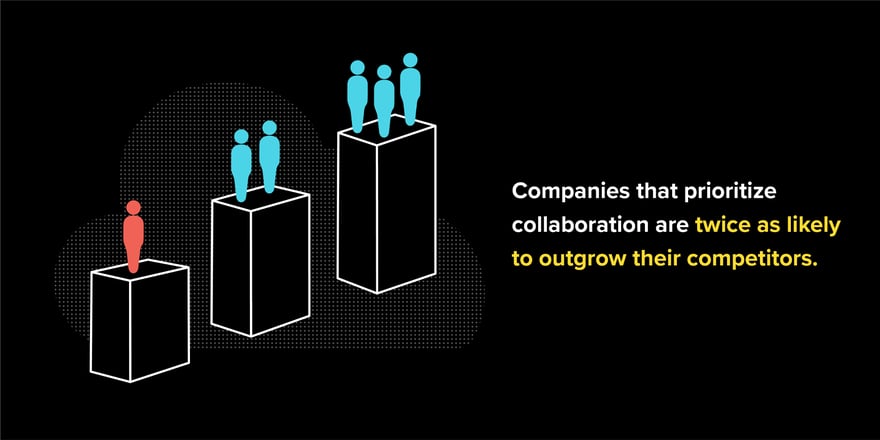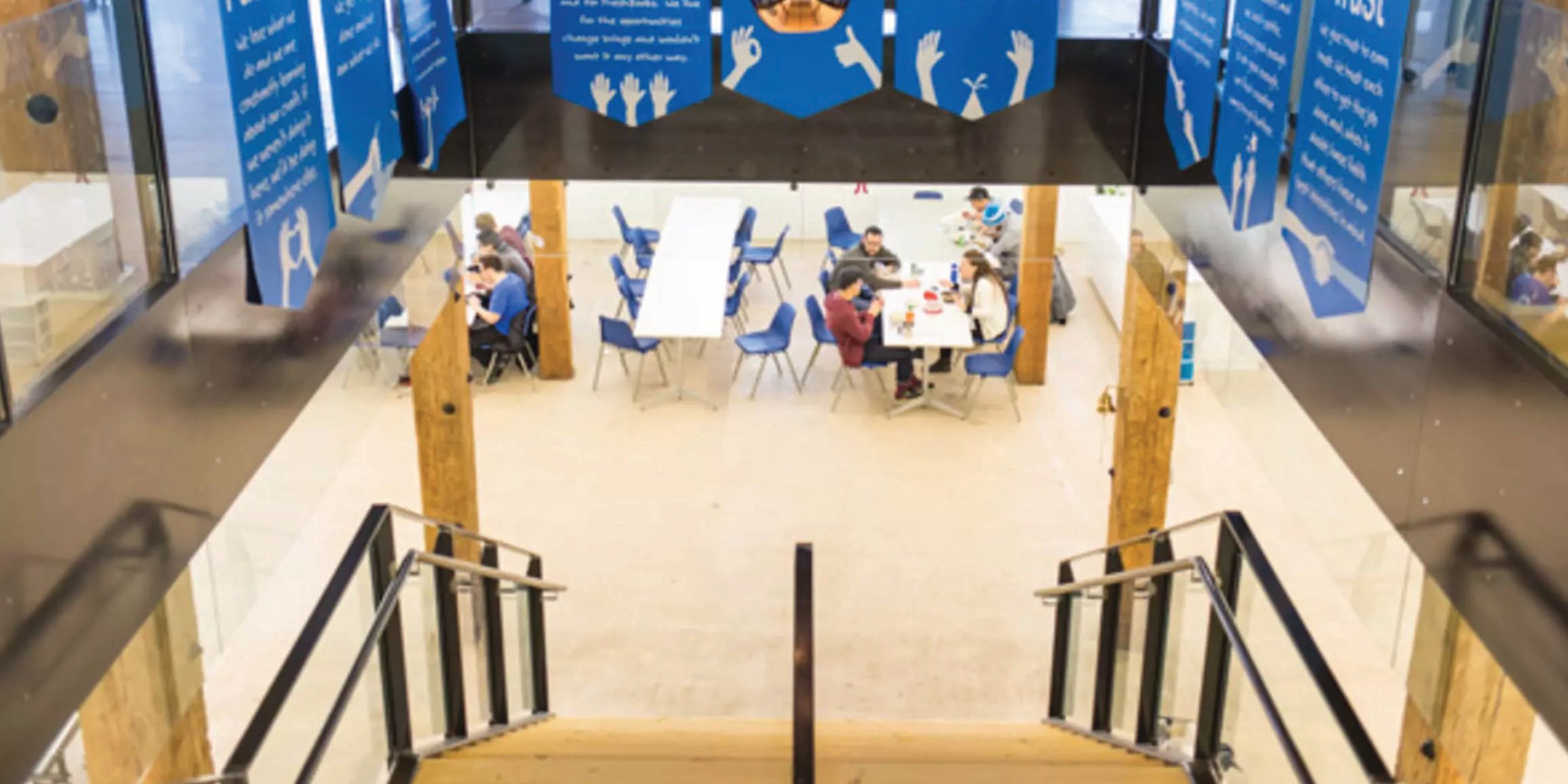Collaboration: Your Competitive Advantage
The office isn’t dead. The office as we knew it, is.
For many of you this statement comes as no surprise. While we’ve proven that working from home is doable, many have recognized that this dramatic shift was not without its negatives.
One of the reasons business leaders and colleagues alike are looking forward to office reopening is these spaces are necessary spaces for fuelling collaboration – it's the aspect of work life that has been most misplaced during COVID, and the one that will be a prime focus as companies rebound into the future.
Collaboration: an imperative for growth and sustainability
Advancing any company’s mission means solving problems, which often requires a group of contributors – each with diverse priorities and experience – collectively making decisions. Without such collaboration, businesses risk overly myopic strategies that lack creativity, risk alienating employees, and ultimately affect both productivity and profitability.
Companies that prioritize collaboration are twice as likely to outgrow competitors, perhaps due to the thoughtful, innovative solutions born from that process. Collaboration isn’t about voting for the best plan at the monthly meeting – it is to creatively develop entirely new ideas.

The pandemic thrust a lot of tech companies into the spotlight to fill the collaboration gap with employees siloed at home. We are all experts in web conferencing now. We collaborate on Slack and MS Teams, brainstorm with Miro, host online workshops with MURAL, manage projects with Asana, on down the list.
Yet true collaboration is difficult to sustain over screens. Spotty connections, static environments, difficulty building trust – there is simply no long-term substitution for face-to-face and organic interactions. We’re struggling without the kind of generative work that allows creativity to blossom and the intrinsic human experience of being together in spaces that foster growth and innovation.
Offices: the linchpins for meaningful collaboration
And so, we return to the office as the resource in hand to facilitate collaboration. This is poised to be a defining post-COVID change: that workplaces transform into hubs for working together, rather than independently.
Many forward-thinking companies are well down this path, realizing years ago that boosting the opportunities for interaction in an office supersedes each employee’s individual productivity. As a Samsung VP says in this 2014 Harvard Business Review article: “The most creative ideas aren’t going to come while sitting in front of your monitor.”
Last decade we watched many companies form their offices or campuses around collaboration. This was famously the case with Big Tech players Facebook, Google, Samsung and others that restructured spaces around “collisions” of employees. Norwegian telecom company Telenor restructured its office around exploration (reaching people in other groups), engagement (reaching people in your group), and energy (building more interactions overall). Amazon designed its Seattle campus around coworking. AT&T built a research center for its engineers to work alongside external startups and partners. Inside “Capital One 360 Cafés” employees can work out in the open with anyone.
Freshbooks designed its Toronto HQ around a ‘movable’ workspace that fosters the three C’s: collaboration, collision and connectedness. The kitchen and lunchroom space was strategically placed at the bottom of a central staircase to present unplanned opportunities to collide and connect with colleagues from across the organization.
 Photo by Jimmy Lu
Photo by Jimmy Lu
Google spent last decade building offices around the world that bred “casual collision” for employees – workspaces that fostered interaction with people working in different teams who may otherwise rarely connect. (More on this pursuit here.)
Now, after a pandemic imperilled face-to-face work, it won’t be just these corporate reformists restructuring offices around collaboration. It must be something everyone now closely considers.
Collaborating on the way forward
Far beyond the direct business benefits such as optimized workflow and increased productivity, collaboration is simply good for people. Happy workers beget happy companies, and the emotional culture of a workforce can influence everything from creativity and teamwork to burnout and absenteeism. Collaborative spaces encourage stronger bonds between co-workers – particularly for millennials, who place a great deal of importance on feeling valued and part of a team.
This is where the office will serve its greatest purpose: not in being a space where people come to work every day for the 9-5 grind. But for specific, thoughtful purposes that foster socialization and collaboration. A re-thought, yet necessary purpose.
Accurate space utilization data through Wi-Fi?
We'll prove it to you.
See why industry leaders leverage InnerSpace to generate valuable insights that go beyond occupancy.

